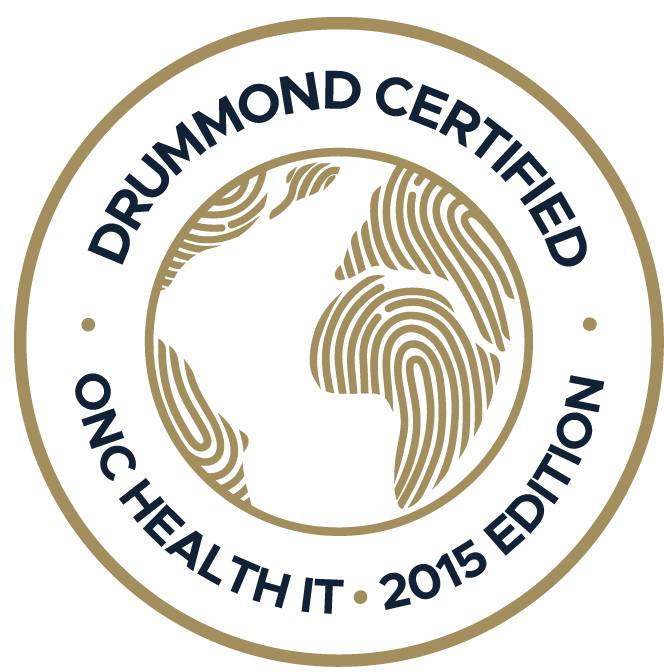From cameras to alarm clocks and phone books, everything you need is now on your smartphone. That’s because convenience is all that matters in the modern world. So why should managing your practice be any different?...
The healthcare industry has long been struggling with the idea of technology. After centuries of handwritten patient records, the switch to electronic medical records (EMRs) was a big one. But now, there’s another shift on the horizon, and for once, it’s not just another new software to learn. This time, it’s a change in how we approach patient records altogether.
It's Electronic Health Record (EHR)—the Electronic Medical Records’ younger, cooler sibling.
On the surface, it may not seem like there would be much difference between the two. After all, how much can one letter really change? But when it comes to your patient’s health, that one letter makes all the difference in the world.

EHR is revolutionizing the healthcare industry as we know it, making it easier for doctors to do their jobs and giving patients more control over their own health. But what, exactly, is the difference between EHR and EMR? In fact, let’s go back a little further.
Let’s first discover what EHRs and EMRs are before we get into their differences.
What is an EMR?

An EMR is a digital record of a patient's medical history, including their diagnoses, medications, lab results, allergies, and other relevant information. It's designed to be accessible to authorized healthcare providers, providing a centralized repository of a patient's health information.
This may include:
- Demographics
- Progress notes
- Problems
- Medications
EMRs were first introduced but didn’t become widespread until the 1990s with the advent of personal computers and the internet. From there, the EMR slowly began to replace paper charts in doctor’s offices and clinics around the world.
Hospital systems were a little slower to catch on, but by the early 2000s, many hospitals had adopted EMR systems as well. In 2009, President Barack Obama signed the Health Information Technology for Economic and Clinical Health (HITECH) Act, which included provisions to encourage the use of EMRs in hospitals and clinics.
How do EMRs work?
EMRs are typically stored on secure servers, and healthcare providers access them via a web-based portal or specialized software. They are designed to be easy to use, with intuitive interfaces that allow healthcare providers to quickly access the information they need to provide the best possible care.
What are the benefits of the EMR?
EMRs offer a range of benefits for healthcare providers and patients alike, including:
Real-time access to patient information: With EMRs, healthcare providers can quickly access a patient's medical history, lab results, and other important information, regardless of where the patient has received care in the past.
Improved coordination of care: EMRs allow healthcare providers to share information easily and securely, improving coordination of care between different providers and healthcare organizations.
Increased efficiency and productivity: By providing healthcare providers with easy access to patient information, EMRs can help reduce the time and effort required to manage patient records.
Enhanced patient safety: EMRs help reduce the risk of medical errors by providing healthcare providers with accurate and up-to-date information on a patient's health status, medications, and allergies.
Better data management and analysis: EMRs provide healthcare organizations with a wealth of data that can be used to identify trends, improve care processes, and manage costs.
Now that we know how it all started let’s find out how we got to where we are today. It’s time to talk about EHRs.
What is an EHR?

An electronic health record (EHR) is a digital version of a patient's medical chart that is created and maintained by healthcare providers. EHRs contain a patient's medical history, diagnoses, medications, treatment plans, laboratory and imaging results, and other relevant healthcare information. EHRs can be accessed and shared by authorized healthcare providers across different healthcare organizations, enabling seamless and coordinated care.
The Benefits of EHR

Improved Quality of Care:
One of the primary benefits of EHRs is their ability to improve the quality of care that patients receive. EHRs provide healthcare providers with access to comprehensive and up-to-date patient information, which enables them to make more informed treatment decisions. This can result in better outcomes, fewer medical errors, and a higher level of patient satisfaction.
Enhanced Patient Engagement:
EHRs also offer benefits for patients themselves. Patients can access their own health information through secure online portals, which allows them to take a more active role in their healthcare. They can review their medical history, view lab and test results, and even communicate with their healthcare provider via secure messaging tools. This can lead to better patient engagement and empowerment, which can ultimately result in better health outcomes.
Increased Efficiency and Cost Savings:
EHRs can also help healthcare organizations become more efficient, which can lead to significant cost savings. With EHRs, healthcare providers can access patient information quickly and easily, reducing the need for time-consuming manual processes such as paper-based record keeping. This can free up time for healthcare providers to focus on patient care and can result in more efficient workflows, shorter wait times, and reduced costs.
Better Coordination of Care:
Finally, EHRs can help improve the coordination of care between different healthcare providers and organizations. Because EHRs can be accessed by authorized healthcare providers across different organizations, they enable better communication and collaboration among providers. This can lead to more seamless and coordinated care, with fewer gaps in communication or care delivery. This can result in better outcomes for patients and can also lead to reduced costs for healthcare organizations.
EHR vs. EMR: Which One is the Best?

| Advantages | Disadvantages | |
|
EMR
|
Better for clinical documentation | Limited access outside of the facility |
| Offers real-time updates | Limited interoperability | |
| Streamlines practice workflow | Restricted to one facility | |
| Improved accuracy of records | Requires extensive training for implementation | |
| Enhanced patient safety through clinical decision support | ||
|
EHR
|
Offers interoperability across healthcare facilities | Expensive to implement & maintain |
| Provides a comprehensive patient record | Security concerns related to data sharing | |
| Facilitates communication among healthcare providers | Potential for decreased productivity during implementation | |
| Improves patient outcomes through better quality of care | ||
| Enables population health management |
Both EHR vs. EMR systems have their own advantages and disadvantages. EMRs are better suited for clinical documentation, offering real-time updates and improved accuracy of records. They can streamline practice workflows and enhance patient safety through clinical decision support. However, EMRs are limited in terms of interoperability and access outside of the facility where they are implemented.
EHRs, on the other hand, offer comprehensive patient records and interoperability across healthcare facilities, enabling better communication among healthcare providers and facilitating population health management. However, EHRs are expensive to implement and maintain, and there are security concerns related to data sharing.
EHR’s limitations are Manageable
- Expensive to implement and maintain: It is true that implementing and maintaining an electronic health record (EHR) system can be expensive, but the long-term benefits far outweigh the costs. EHRs help to streamline operations, reduce errors, and provide better patient care. One way to tackle this issue is by conducting a cost-benefit analysis before implementing an EHR system. This analysis can help determine if the cost is justified by the benefits. Additionally, seeking funding opportunities, negotiating with EHR vendors, and implementing cost-saving measures can help minimize the financial burden of EHR implementation and maintenance.
- Security concerns related to data sharing: With the increasing amount of data stored in EHRs, there is a valid concern about data security and privacy. However, EHRs offer several security measures that can be implemented to protect patient information, such as encryption, access control, and audit trails. To tackle this issue, healthcare organizations should implement comprehensive security policies and procedures, provide regular security training to staff, conduct security risk assessments, and comply with regulatory requirements such as HIPAA.
- Potential for decreased productivity during implementation: It is true that the implementation of EHRs can initially lead to a decrease in productivity as staff members learn the new system. However, with proper planning, training, and support, this decrease in productivity can be minimized. To tackle this issue, healthcare organizations should conduct a thorough assessment of their current workflow and processes, involve staff in the planning and implementation process, provide sufficient training and support, and consider a phased implementation approach to minimize disruption.
While there are some potential defects associated with EHR implementation and maintenance, they can be effectively tackled with proper planning, resources, and support. With the right approach, EHRs can provide significant benefits to healthcare organizations, patients, and providers.
The Bottom Line
The EHR is designed to be a comprehensive record of a patient’s health, making it easy for doctors to have all the information they need in one place. It’s also designed to be interoperable, meaning it can easily share information with other EHR systems.
The HITECH Act mentioned above also encouraged the use of EHRs, and many hospitals and clinics have adopted them in recent years. The program’s success speaks for itself—a recent study found that hospitals with EHRs saw a decrease in mortality rates and length of stay, as well as an increase in patient satisfaction.
It’s undeniably clear that EHRs are the way of the future. And while EMRs are still used by some clinics and hospitals, a recent survey of national electronic health records found that 89.9% of physicians reported using an EHR system. With this in mind, the battle between Electronic Health records vs. Electronic Medical records is no longer a question of if EHRs will replace EMRs, but when.
The bottom line is that in EHR vs. EMR battle, HER is definitely the winner. It offers several advantages and benefits that simply can’t be ignored. As the healthcare industry continues to evolve, it’s essential to stay ahead of the curve and adopt new technologies—like EHRs—that can improve the quality of care we provide to our patients.
Hospitals and clinics that have not made the switch to an EHR system should strongly consider doing so. It’s clear that EHRs offer many benefits for both patients and providers alike. As we move into the future of healthcare, EHRs will become more and more commonplace—so it’s important to be ahead of the curve.
For those who are already using an EHR system, make sure you’re taking full advantage of its capabilities! Your patients will thank you for it.
Practice EHR Can Set You Up for Success
If you’re looking for an EHR system that can set you up for success, look no further than Practice EHR. Practice EHR is a comprehensive and user-friendly EHR system that offers all the features and functionality you need to streamline your workflow and provide the best possible care to your patients.
Ready to make the switch to an EHR system? There’s no time like the present! Contact us today to learn more about how we can help you succeed.
Topics: Healthcare Office Management, EHR Solution, Specialty-Specific EHR, Client Favorites, Health records 101, EMR vs EHR Difference
RECENT POSTS



TOPICS
- EHR Solution (147)
- EHR (84)
- Patient Care (77)
- digital age (77)
- Medical Billing (72)
- Specialty-Specific EHR (70)
- Integrated EHR (59)
- Small Practice (56)
- Technology in Healthcare (55)
- Industry Update (50)
- New Technology (47)
- Medical billing services (45)
- RCM (43)
- EHR Features (42)
- Cloud-based EHR (39)
- Practice EHR News (39)
- Healthcare Office Management (37)
- Kiosk (28)
- ePrescribing (21)
- HIPAA Security (20)
- Telemedicine (14)
- EMR (12)
- Revenue Cycle Management (12)
- Practice Management Software (11)
- Client Favorites (10)
- Practice Automation (10)
- The ONE (10)
- Urgent Care (8)
- MACRA/MIPS (7)
- Patient Portal (7)
- Switching to New EHR (6)
- events (6)
- E-Prescribing (5)
- Product Updates (5)
- TeleVisit (5)
- AI Solutions (4)
- Insider (4)
- Internal Medicine EHR (4)
- MIPS (4)
- Podiatry (4)
- Podiatry EHR (4)
- AI Scribing (3)
- HIPAA (3)
- MIPS Reporting (3)
- Regulatory Updates (3)
- AI scanning (2)
- Billing for Private Practices (2)
- Clearinghouse (2)
- Dermatology EHR (2)
- EHR Scheduling (2)
- Foot and Ankle Care (2)
- Foot and Ankle EHR (2)
- Health records 101 (2)
- Integrated Practice Management (2)
- Medical Credentialing (2)
- Medical Practice Management Software (2)
- Orthopedics EHR (2)
- Patient Check-in Kiosk (2)
- Psychiatry EHR (2)
- Quality of Patient Care (2)
- Reporting Under MIPS (2)
- Risk and Liability in Medical Settings (2)
- Telehealth Platform (2)
- Telehealth Platforms (2)
- What Works Clearinghouse (2)
- AI-powered Medical Billing (1)
- Bariatric EHR (1)
- Behavioral Health Practices (1)
- Billing Communication (1)
- Cardiology EHR (1)
- Cash Flow (1)
- Chiropractic EHR (1)
- Data Security (1)
- Dos and Don'ts (1)
- EHR Guides (1)
- EHR KPIs (1)
- EHR Questions to Ask (1)
- EHR for Chiropractors (1)
- EHR for Chronic Illness (1)
- EMR vs EHR Difference (1)
- ENT EHR (1)
- Eligibility Verification in Medical Billing (1)
- Endocrinology EHR (1)
- Family Medicine (1)
- Family Medicine EHR (1)
- Gastroenterology (1)
- Gastroenterology EHR (1)
- General Surgery EHR (1)
- Geriatrics EHR (1)
- Guides (1)
- Healthcare Compliance Certification (1)
- Healthcare Practice Office Management (1)
- Help Center Videos (1)
- Insurance Reimbursement (1)
- KPI (1)
- Key Performance Indicators (1)
- Lab Processing (1)
- MACRA (1)
- Medical Billing Partner (1)
- Medical Coding Services (1)
- Mobile EHR (1)
- Nephrology EHR (1)
- Neurology EHR (1)
- Pain Management EHR (1)
- Pediatrics EHR (1)
- Physical Therapy EHR (1)
- Practice Cash Flow (1)
- PracticeEHR GO App (1)
- Pulmonology EHR (1)
- Simplify Practice Management (1)
- Staffing in Healthcare (1)
- Switch Medical Billing Providers (1)
- Urgent Care Medical Billing (1)
- Urology EHR (1)
- insurance claim denials (1)







